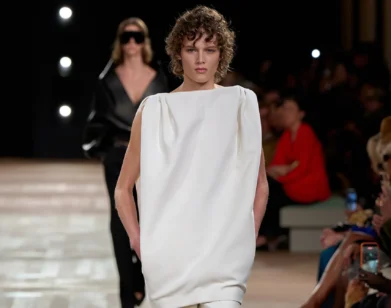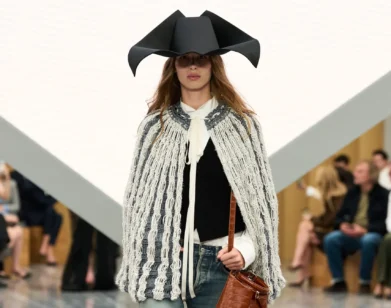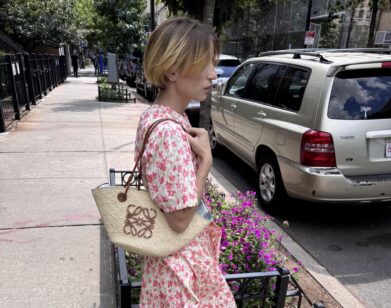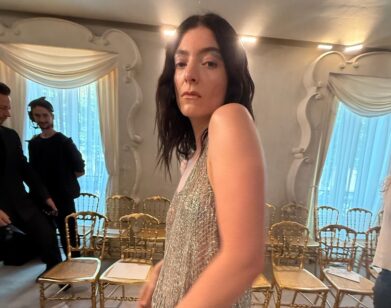Martine Rose Shares the Weird Secret to Her Fashion World Success with the Artist Martine Syms
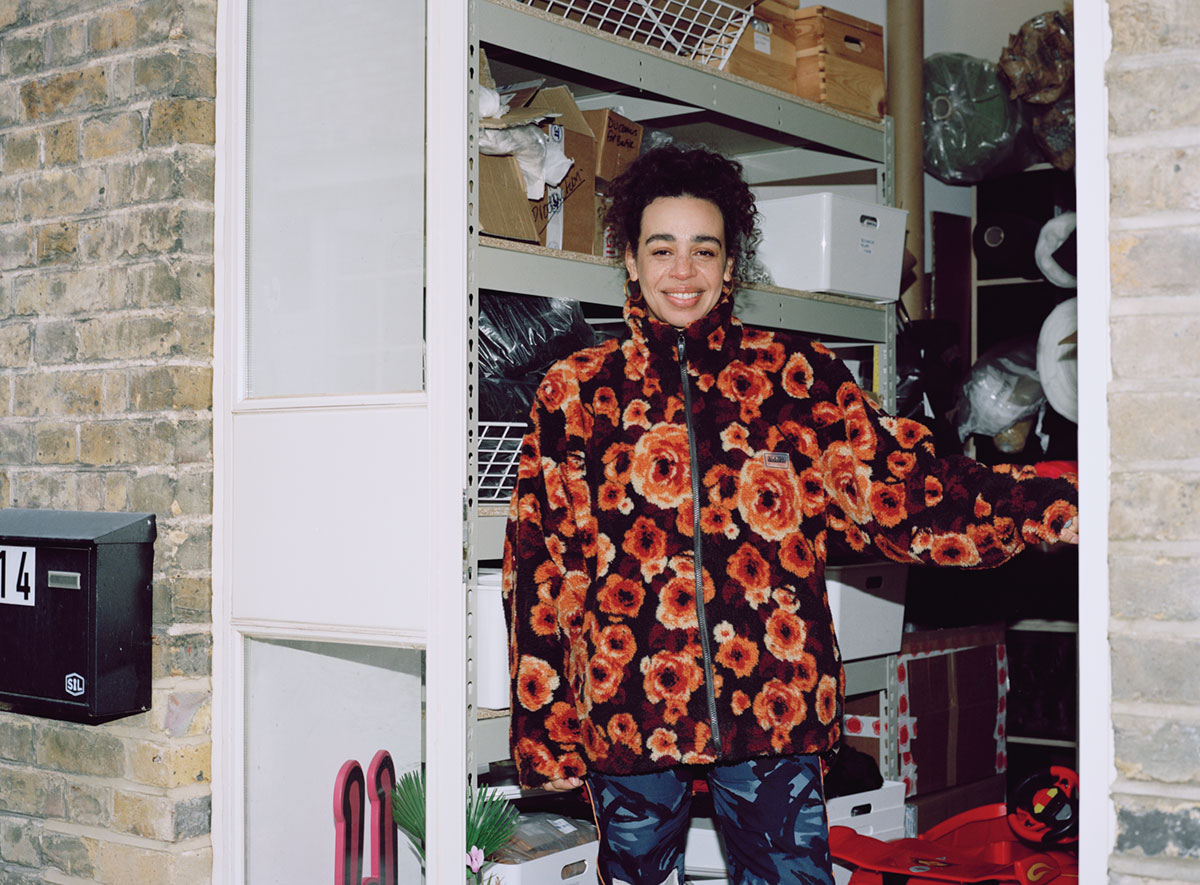
Fleece by Napapijri Martine Rose. Pants by Martine Rose.
Martine Rose has been fashion’s favorite “emerging designer” for ten years, and she seems to like it that way. In an industry where independent labels often look more like portfolio projects for their designers to get big jobs at Kering or LVMH — see: Virgil Abloh (Louis Vuitton), Jonathan Anderson (Loewe), or even Rose’s longtime collaborator Demna Gvasalia (Balenciaga) — the British designer is admittedly, and refreshingly, unambitious. Her eponymous line is instead a space for play that, in spite of its commercial success, remains decidedly cultish. (One need look no further than her recent collaboration with Nike, a grown-up, multinational partnership for which Rose launched a campaign on Craigslist.) On a call from Switzerland, Rose spoke to the video and performance artist Martine Syms about how to think big without killing the dream.
———
SYMS: Has your process changed over the past decade?
ROSE: I’m still very much into the same things I’ve always been into, but how I make it happen has changed and become more formalized. I’m a really instinctual person. I want my clothes to feel slightly undone, a bit unraveled. I don’t want what I do to just be a product. You’re buying an emotion.
SYMS: I never think of an exhibition as a finished thing. A teacher of mine once said, “You never finish anything.” I’ll put something in a show, but then still fuck with it and create a different version.
ROSE: It’s a step in the process. I never ever feel like, “Okay, that’s done. Check box.” I’m hypercritical of myself and I’m never quite satisfied. But I think it’s good to be like, “I could have told this in another way.” It’s a constant conversation.
SYMS: That makes me think about how your work enters the world, too. Like that project you did with Nike and Craigslist, where you’re creating an encounter that could potentially have other results.
ROSE: That Craigslist thing was interesting because we really had no fucking clue what was going to happen. There’s this button on Craigslist where people can just shut down an advert, so loads of people were just shutting our thing down or flagging it, and then there’s this one guy manning it probably who would have to put it back up again. Craigslist was really the Wild West, but that uncontrollable element made it interesting.
SYMS: It seems like there is a lot of collaboration amongst your team.
ROSE: I find it invigorating. I’m not a planner or a strategic person, so collaboration for me is a really organic process. Collaboration, for me, is formed essentially from really liking the person.
SYMS: Of late, I’ve found myself frequently working with musicians or people in film. I’ve been ravenous for culture, and I’m always working with people who love talking about a specific thing that they’re into. Like, I love talking to a printer and having them tell me all the facts about printing.
ROSE: I love extreme people. Geeks. People who are fascinated with gardening, even.
SYMS: Because they’re so obsessive. So I’m like, “Tell me all about that.” With collaboration, sometimes I think of it as my work having a social life. But then you have to bring that into a museum space without it losing that feeling.
ROSE: That must be a real challenge.
SYMS: I don’t want it to feel like I’m trying to make it shiny, or create a space of hierarchy.
ROSE: There’s so much formality in a gallery space. I find the same with shows. There’s such a hierarchical, almost elitist element to shows. How do you imbue that space with personality and accessibility?
SYMS: I first found out about your brand through an art book fair — from a zine that you made — and I think that’s a great example of creating accessibility. Your silhouettes also seem to play with these middle-class elements, so I’m curious to hear what you think about working in the quote-unquote luxury world.
ROSE: For me, play and humor are really important — sex is also important, so those three elements are always circling each other in the conversations in my studio. “Is that sexy? Is that funny? Is that weird? Is that a combination of sexy and weird?” It’s never like, “Is that chic?” Or even, “Is that beautiful?” Sex, humor, and play are all that anyone cares about, really.
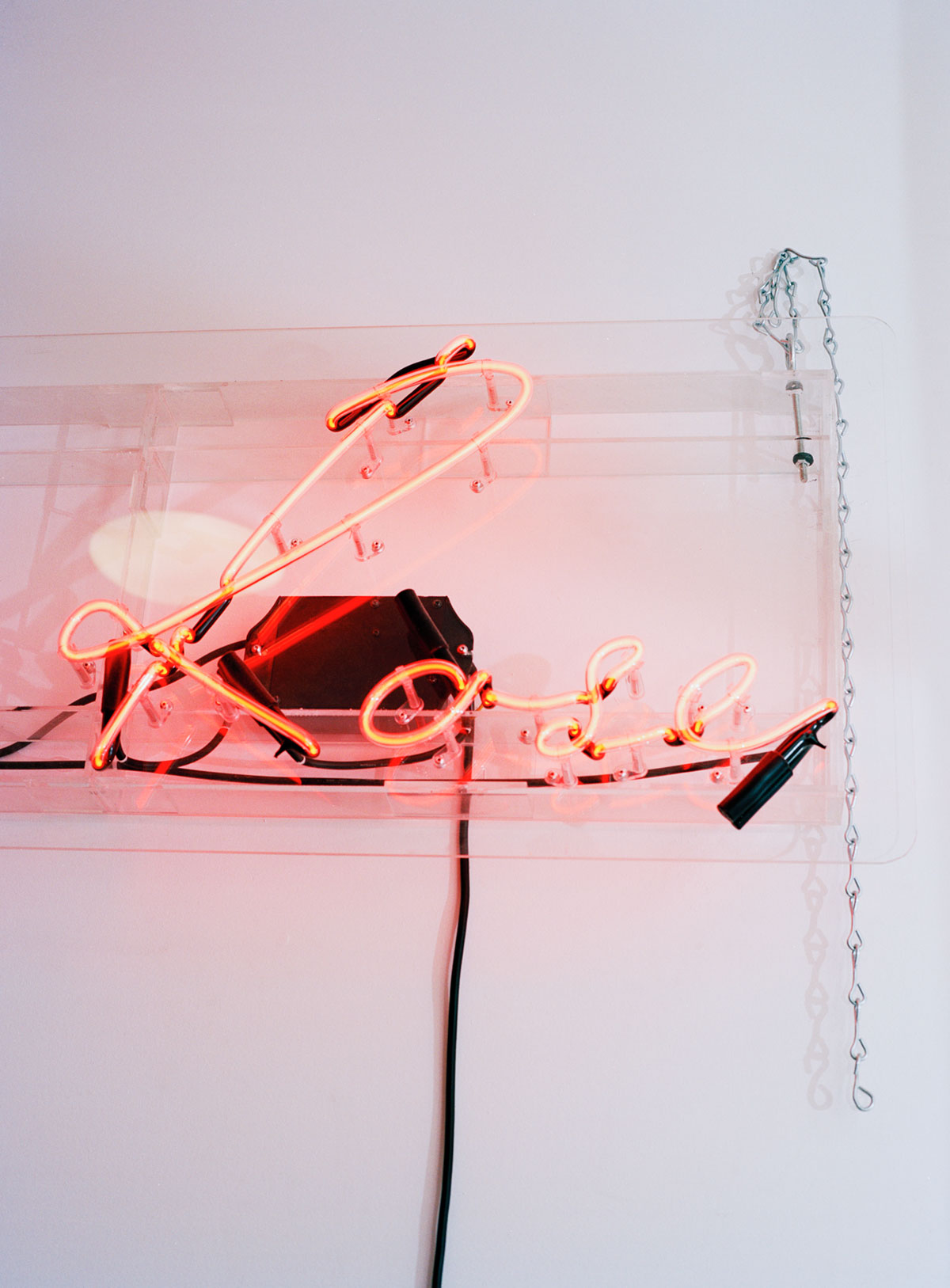
Inside Martine Rose’s studio in London.
SYMS: For sure.
ROSE: Fashion is in a funny place at the moment — fashion and culture are in a funny place. No one knows where it’s going. There’s saturation. There’s the huge influence of social media and the commercialization of a lot of things. On one hand, it totally depressing. But then on the other, it’s potentially really exciting and unknown. I feel like there’s a bubble about to pop and I don’t know what’s inside it.
SYMS: Exactly.
ROSE: Part of this crossover — of “high and low fashion,” “street culture,” or whatever — is the idea that everything is a commodity. I feel exhausted with the whole conversation, but it’s a conversation we need to keep having in order to get to a new place.
SYMS: I don’t really believe in the high-low divide. I don’t believe in a margin versus a center, because I just don’t have that value system. With subcultures — I prefer the term “autonomous culture” — you get to a place where you have a different value system, and that’s what I really like about what goes on at clubs.
ROSE: That’s 100 percent why I find club culture and everything around it so valuable and life-affirming. It really is a utopian thing. I was talking the other day about football culture and football hooliganism, and how in the 1980s these boys in the U.K. would go out and beat the shit out of each other and be racially disgusting. But then in 1988 and 1989, MDMA and the whole rave culture came in, and football hooliganism died. The hooligans were now taking E and going to clubs with black kids, with gay kids, with hippies, and they stopped fighting because they were out dancing together.
SYMS: Did I tell you about how I wore my Martine Rose jersey to a Chelsea game?
ROSE: No!
SYMS: I’m really into football, and when I was in London in September, my gallery was like, “What do you want to do?” And I was like, “All I want to do is go to a football match.”
ROSE: That’s so weird that you’re even into football!
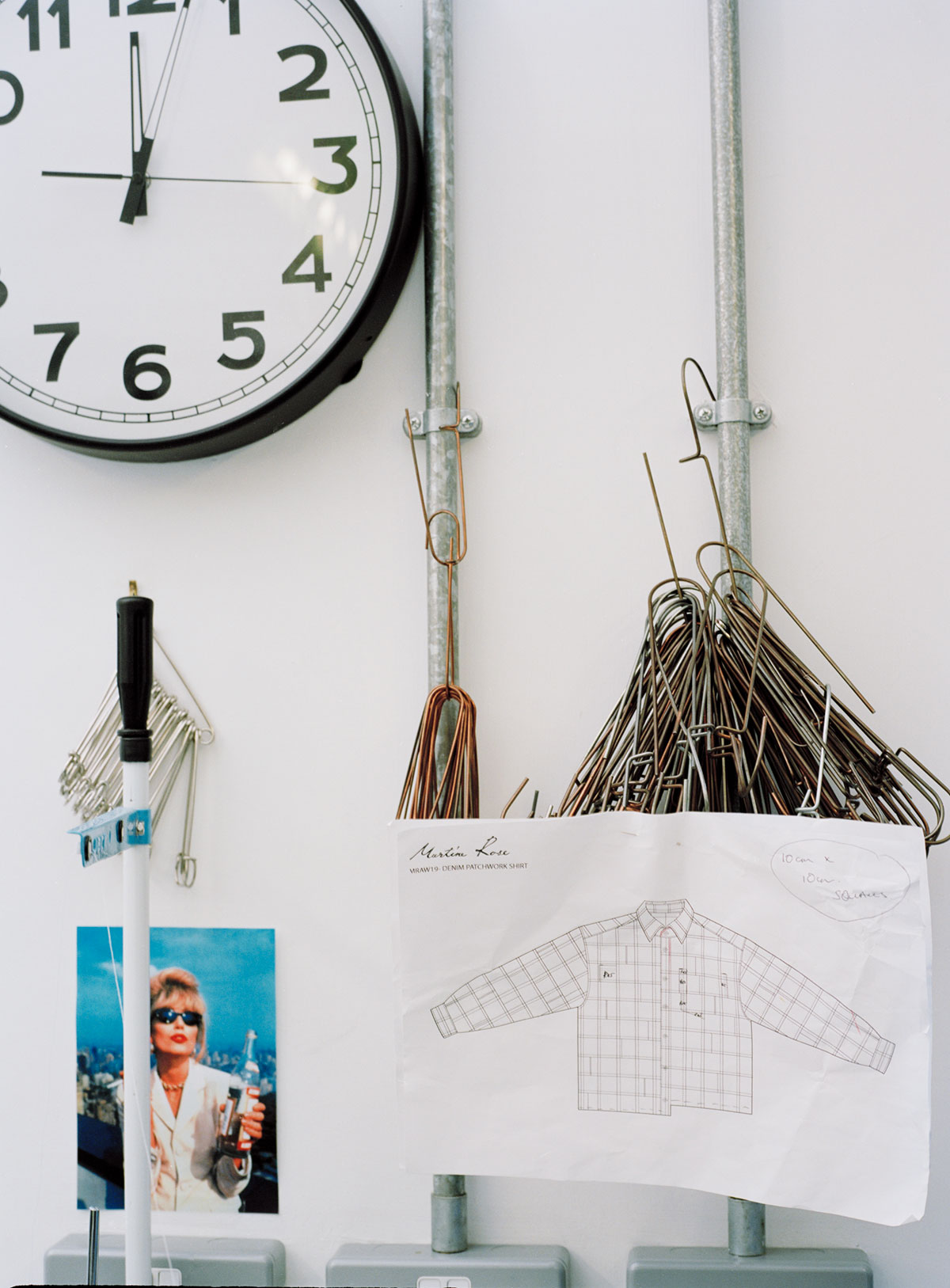
Insdie Martine Rose’s studio in London.
SYMS: I know. I grew up playing, and then I started playing again recently. So this was the peak of my re-obsession with football, and my gallery got me box seats to go see Chelsea. Without even thinking, I was like, “Oh, obviously I’m going to wear my Martine Rose jersey.” My name is Martine, so it looks like it’s custom.
ROSE: I hadn’t even thought of that.
SYMS: But when my friend picked me up — he’s British — he was like—
ROSE: “What the fuck are you doing?”
SYMS: Well, he was like, “I’m pretty sure they’re playing Burnley today.” And I didn’t even pay attention. I was like, “Cool, whatever.” But then, as we pulled up to the field, it dawned on me that I was wearing the away colors. And when I got there, they were like, “You can’t come in with that on.”
ROSE: You’re joking.
SYMS: I was like, “It’s a designer!”
ROSE: No!
SYMS: They made me put my jacket over it.
ROSE: That makes me smile.
SYMS: Do you have a dream project?
ROSE: People ask me that all the time, and it’s a weird thing to say, but I’m not an ambitious person. I’m really happy about what I’m doing at the moment. I’m working on my dream projects already, and even to be able to do these conversations and talk to you is such a dream. This is such a wonderful thing to do in the morning, and then I get to go on and do something else today that will also be a dream.
———
Makeup: Marina Belfon-Rose
Photography Assistant: Karolina Burlikowska


